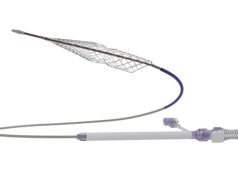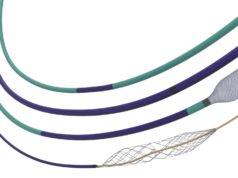
Inari Medical has announced the enrolment of the first high-risk pulmonary embolism (PE) patient in the FLAME (FlowTriever for acute massive pulmonary embolism) study. One in 20 PE diagnoses is categorised as high risk and these are associated with a mortality rate of up to 40% at 90 days.
The first FLAME patient was enrolled at the Penn Presbyterian Hospital & Hospital of the University of Pennsylvania (HUP) in Philadelphia, USA, by co-principal investigators Sameer J Khandhar and Jay S Giri. “We are pleased to be the first site to enrol a patient in FLAME,” said Khandhar (Penn Medicine, Philadelphia, USA). “We frequently see on-table normalisation of haemodynamics using FlowTriever to extract large clots in PE patients. We are eager to formally study this effect in high-risk PE patients in whom the immediacy of this impact might reverse the death spiral and save lives,” he added.
FLAME is a prospective, multicentre, parallel-group observational study evaluating treatment outcomes for up to 250 high-risk PE patients. It is the largest ever high-risk PE study of any intervention and its design, informed by evidence development guidance from the American Heart Association (AHA), aims to change the high-risk PE treatment guidelines. “Conservatively managed high-risk PE is associated with high mortality, but there are limited data supporting interventional treatment. We have designed FLAME to prospectively examine all patients at participating centres with high-risk PE, including those not treated with FlowTriever, to maximise generalizability of the study,” said Giri (HUP, Philadelphia, USA).
Beyond FLAME, Inari continues to invest in its clinical study pipeline. Positive long-term late-breaking results were recently presented at VENOUS2021, (17–20 March, virtual), the annual meeting of the American Venous Forum, from both the CLOUT and FLASH studies. FLASH—already the largest prospective haemodynamic study of any PE treatment ever—is being doubled in size to 1,000 patients to collect data from a conservatively managed subgroup and include sites outside the USA. In addition, for the first time ever, 200 patients will be monitored and studied using the Apple Watch.










